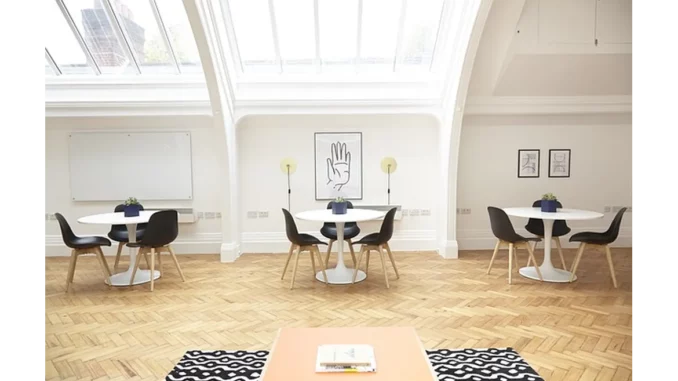
In the bustling heart of our ever-expanding cities, where space is a luxury, the art of maximising small spaces has become not just a necessity but an expression of creativity and style. To gain deeper insights into this fascinating subject, I recently sat down with Emily Carter, a seasoned interior designer at Michael Helwig Interiors, known for her ingenious solutions that transform cramped quarters into airy, inviting havens.
Elegancia.homes: Creators of elegant spaces for personal wellness and relaxation.
As Emily welcomed me into her compact yet remarkably spacious studio apartment, she exuded an infectious enthusiasm for her craft. “Every small space presents a unique challenge,” she began, her eyes lighting up. “But it’s also an opportunity to experiment with design elements that might not be as impactful in larger rooms.”
One of the focal points of our conversation was the transformative power of light and colour. As Emily explained, “For variety, think about enhancing the walls with even more brightness by using accessories, furniture, pictures, and/or flowers in lighter colours. This balance is crucial in creating the illusion of space.”
Her own living room was a testament to this philosophy. The walls, painted in a soft, warm white, provided the perfect backdrop for a carefully curated selection of accessories. A light oak coffee table, flanked by pastel-hued cushions, mirrored the room’s airy essence. “The key is to use light colours to reflect more light within the room,” Emily noted. “It’s all about creating an openness that allows the eye to move freely, giving the impression of a larger area.”
Emily was particularly fond of using nature-inspired elements to bring a room to life. “Flowers are an excellent way to add a pop of colour without overwhelming the space,” she suggested, pointing to a delicate arrangement of white lilies on the windowsill. “They introduce a natural brightness that complements the existing decor.”
We moved on to discuss the role of artwork in small spaces. Emily’s approach was both practical and artistic. “Select pieces that resonate with you but also contribute to the room’s lightness,” she advised. Above her sofa, a large abstract painting in soft blues and greens drew the eye upward, cleverly expanding the room’s vertical space. “The right artwork can serve as a focal point, drawing attention and adding depth,” she added.
Emily was quick to acknowledge that furniture choice plays a pivotal role in small space design. “Multi-functional furniture is a game-changer,” she asserted. In her own space, a sleek sofa bed provided seating by day and transformed into a cosy bed by night. A stylish ottoman with hidden storage offered an elegant solution to the perennial problem of clutter. “Each piece should serve at least two purposes,” Emily explained. “It’s about making every square foot count.”
As our conversation unfolded, Emily shared anecdotes of her experiences with clients who initially struggled with their small spaces. “One couple thought their apartment was too small to entertain,” she recalled. “But by using foldable dining tables and stackable chairs, we created a versatile space that could easily accommodate guests.” Her face lit up with pride as she recounted their surprise and delight at the transformation.
Storage, Emily emphasised, is another crucial aspect of small space living. “Innovative storage solutions can make a world of difference,” she said, leading me to a wall-mounted bookshelf that doubled as a display for personal mementoes. “The idea is to keep the floor as clear as possible, which helps maintain a sense of openness.”
Towards the end of our conversation, Emily reflected on the personal satisfaction she derives from her work. “There’s something incredibly rewarding about helping people fall in love with their homes,” she mused. “No matter the size, every space has the potential to be beautiful and functional.”
As I left Emily’s apartment, I was struck by how her insights could be applied beyond just interior design. Her emphasis on balance, versatility, and creativity resonated as valuable life principles. In a world where space is often limited, the ability to adapt and innovate becomes a skill that transcends physical dimensions.
For anyone grappling with the challenges of small space living, Emily Carter’s advice offers a wealth of inspiration. By embracing light, colour, and multifunctionality, even the cosiest of spaces can be transformed into elegant, inviting sanctuaries. In the end, it’s not about the size of the space, but the size of the ideas you bring to it.
Diana Tahjmir


Be the first to comment